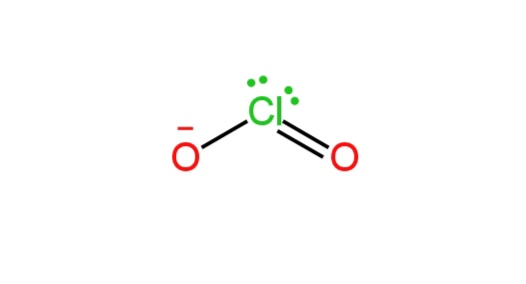
Which of the following is not linear
A. \[CO_2\]
B. \[ClO_2^-\]
C. \[I_3^-\]
D. None of these
Answer
219.6k+ views
Hint: Linear geometry depicts the geometry around a central atom bonded to two other atoms positioned at a bond angle of \[180^o\].
Linear molecules like acetylene possess sp orbital hybridization for their carbon centers.
Complete step by step solution:Here in this question, we have to find out the molecule which has linear geometry.
A. \[CO_2\]
Carbon is the central atom here. It has four valence electrons.
Each oxygen atom is doubly bonded to the carbon atom. We know that in VSEPR theory, multiple bonds are considered as a single electron group.
So, there are two bond pairs on carbon.
So, it has a linear structure.
B. \[ClO_2^-\]
Chlorine is the central atom here. It has seven valence electrons.
One oxygen atom is doubly bonded and one is singly bonded to the chlorine atom. We know that in VSEPR theory, multiple bonds are considered as a single electron group.
So, there are two bond pairs and two lone pairs on the Cl atom.

Image: Structure of \[ClO_2^-\]
So, it has a bent structure.
So, B is correct.
C. \[I_3^-\]
In this molecule, there are three Iodine atoms, one of the atoms carries a negative charge which has 3 lone pairs of electrons and 2 bond pairs.
The three lone pairs are repulsive and take equatorial positions.
So, the structure is linear.
So, C is incorrect.
So, option B is correct.
Note: To specify the total valence electrons of a molecule, aggregate all the valence electrons of the atoms present in the molecule is taken, one is subtracted for every positive charge and one is added for every negative charge.
Geometry around the central atom is determined based on the sigma bond pair and lone pair. Pi bonds are not significant.
Linear molecules like acetylene possess sp orbital hybridization for their carbon centers.
Complete step by step solution:Here in this question, we have to find out the molecule which has linear geometry.
A. \[CO_2\]
Carbon is the central atom here. It has four valence electrons.
Each oxygen atom is doubly bonded to the carbon atom. We know that in VSEPR theory, multiple bonds are considered as a single electron group.
So, there are two bond pairs on carbon.
So, it has a linear structure.
B. \[ClO_2^-\]
Chlorine is the central atom here. It has seven valence electrons.
One oxygen atom is doubly bonded and one is singly bonded to the chlorine atom. We know that in VSEPR theory, multiple bonds are considered as a single electron group.
So, there are two bond pairs and two lone pairs on the Cl atom.

Image: Structure of \[ClO_2^-\]
So, it has a bent structure.
So, B is correct.
C. \[I_3^-\]
In this molecule, there are three Iodine atoms, one of the atoms carries a negative charge which has 3 lone pairs of electrons and 2 bond pairs.
The three lone pairs are repulsive and take equatorial positions.
So, the structure is linear.
So, C is incorrect.
So, option B is correct.
Note: To specify the total valence electrons of a molecule, aggregate all the valence electrons of the atoms present in the molecule is taken, one is subtracted for every positive charge and one is added for every negative charge.
Geometry around the central atom is determined based on the sigma bond pair and lone pair. Pi bonds are not significant.
Recently Updated Pages
Electricity and Magnetism Explained: Key Concepts & Applications

JEE Energetics Important Concepts and Tips for Exam Preparation

JEE Isolation, Preparation and Properties of Non-metals Important Concepts and Tips for Exam Preparation

JEE Main 2021 July 25 Shift 1 Question Paper with Answer Key

JEE Main 2021 July 22 Shift 2 Question Paper with Answer Key

States of Matter Chapter For JEE Main Chemistry

Trending doubts
JEE Main 2026: Application Form Open, Exam Dates, Syllabus, Eligibility & Question Papers

Derivation of Equation of Trajectory Explained for Students

Hybridisation in Chemistry – Concept, Types & Applications

Understanding the Angle of Deviation in a Prism

Understanding Atomic Structure for Beginners

How to Convert a Galvanometer into an Ammeter or Voltmeter

Other Pages
NCERT Solutions For Class 11 Chemistry Chapter 7 Redox Reaction

JEE Advanced Marks vs Ranks 2025: Understanding Category-wise Qualifying Marks and Previous Year Cut-offs

Thermodynamics Class 11 Chemistry Chapter 5 CBSE Notes - 2025-26

NCERT Solutions ForClass 11 Chemistry Chapter Chapter 5 Thermodynamics

Hydrocarbons Class 11 Chemistry Chapter 9 CBSE Notes - 2025-26

Equilibrium Class 11 Chemistry Chapter 6 CBSE Notes - 2025-26




